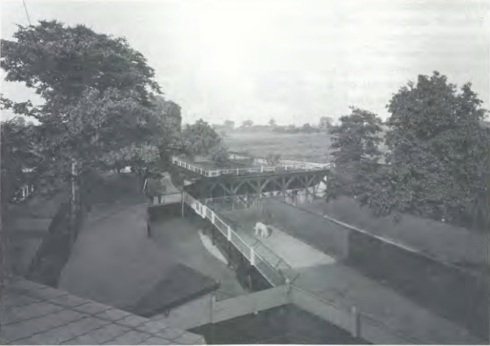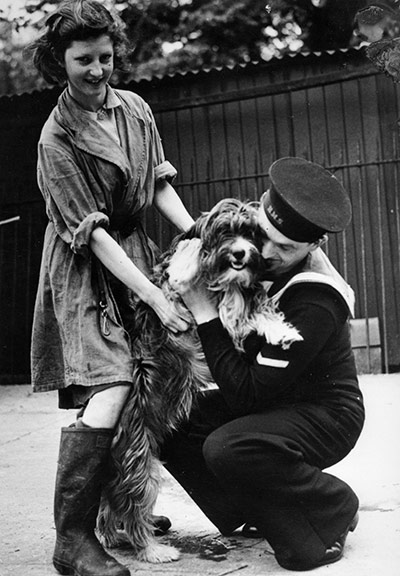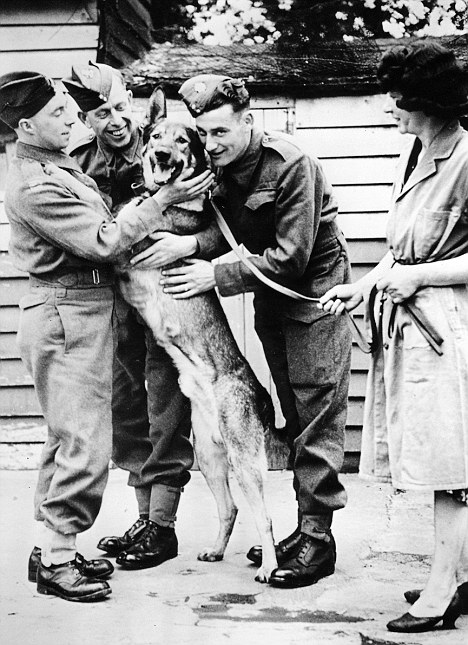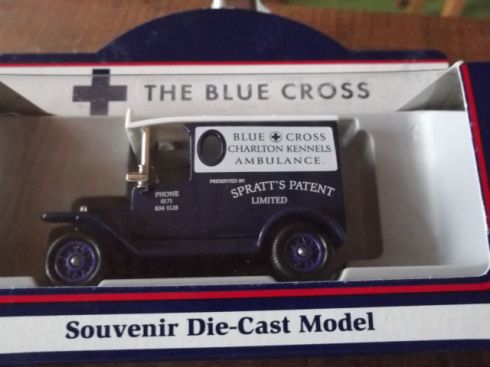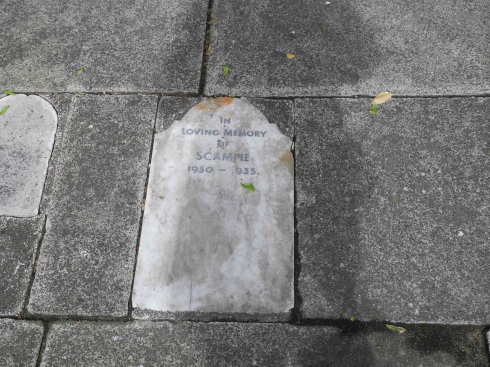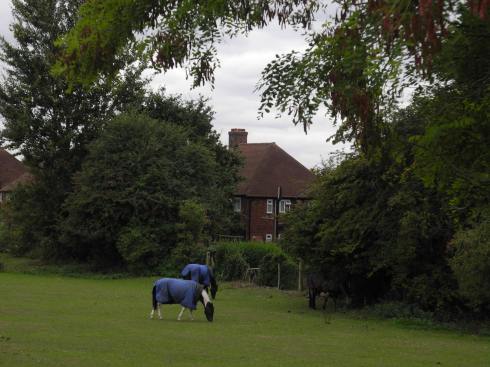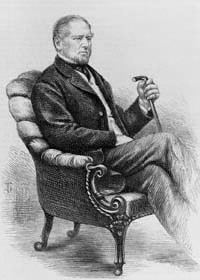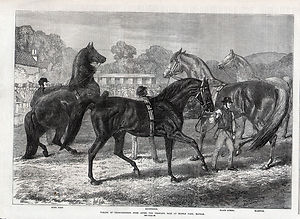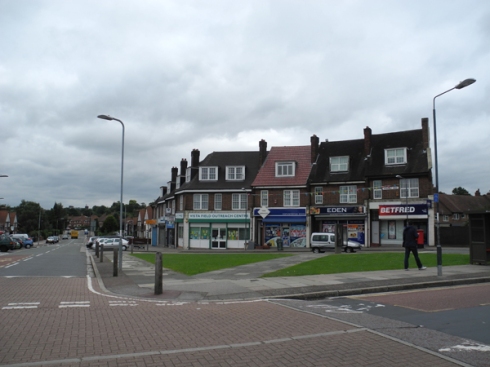You are currently browsing the monthly archive for September 2013.
This is a part of the town only known to walkers and those with a long association with the place. Located at the back of Eltham Palace it is an ancient right of way which is now part of the Green Chain Walk. As you approach Eltham Palace its worth taking some time to look at the texture of the brick work along Court Yard and Tilt Yard defying time still standing but bowing. The walls date back to the 16th C and are listed. Take the path at the side of the Palace main entrance passing some Tudor style mansions. There is a turning to the left marked by the Green Chain sign and an iron gate with a White Tudor Rose. This is King John’s Walk.
The vast panorama tricks you to think that you are in the middle of Kent rather than a mere half mile from the High Street. This path originally linked the Palace with the hunting estates of Middle Park and the Great Park. There is still sufficient open space to get a feel of what it was like when it was a hunting park. The path is named after Prince John of Eltham born at the Palace in 1316 to Edward ll and Queen Isabella. It is also associated with the French King Jean Le Bon who was held captive at the Palace after the Battle of Poitier 1356. It is said that he used to exercise here. The familiar London skyline of the Shard, London Eye, Walkie Talkie, Canary Wharf and Millennium Dome can be seen from the path. Over to the West is a view of Crystal Palace. At the Green Chain sign post take the right hand path towards The Tarn.
There is a field of donkeys and a couple of mules. Yes, and you are still in Eltham. They are quite friendly and will move towards you as you walk along the path. The path crosses the boundary of the Middle Park Estate crossing Court Road and into The Tarn.
At the entrance there is a C18th brick ice well built to supply Eltham Lodge. Built in 1664 it is now the Royal Blackheath Golf Club which is set back from Court Road. The Tarn is named after the lake which is the main feature of the small park. Eltham Lodge and the Tarn were once within the Great Park of Eltham Palace. To return to the High Street take Court Road. The walk will take about an hour or more if you spend more time with the donkeys.
If you’re a fan of Gothic there’s no better place to admire it than a Victorian cemetery. Greenwich cemetery is situated on the corner of Shooters Hill and Well Hall Road, so it’s actually Eltham. It may not be as famous as Highgate but its one of the largest cemeteries in London, with striking views across London and has two Gothic chapels. There’s even a connection with Russia. The Russian poet, political activist and exile, Nikolai Platonovich Ogarev (1813-1877) was buried here. In 1966 his remains were exhumed, cremated and his ashes taken back to Russia by two of the Soviet Writers’ Union. They were buried in the Novodevichy Cemetery in Moscow.
There are some impressive examples of urns, obelisks and statues which have, sadly, become obscured by dense ivy and brambles. One obelisk commemorates Ellen Amelia (Nellie) aged 7 and her sister Olive Madeline aged 4, followed shortly afterwards by their parents Robert and Amelia Abbot Moore who both died on 19th August 1889. The imagined tragedy still heart-rending;the memorial set up for eternity now shrouded in vegetation.
The cemetery is close to the Royal Herbert Hospital and the Royal Military Academy so, as you might guess, there’s some notable military personnel buried here. The grave of General Sir Arthur Holland, Commandant of the Royal Military Academy is confusing as it had the surname Holland and Butcher. Apparently he changed his name. James Jameson was a Surgeon General and Director of the Army Medical Services. On the noticeboard you will see an intriguing pink section which is the Norwegian area. Here are buried about thirty Norwegian refugees killed in the 2nd World War.
A large white memorial to the dead of the First World War dominates the far end of the site. The view from this vantage point follows the Thames from Greenwich to Canary Wharf and the City. The inscription is: Their Name Liveth for Evermore. Scattered though the grounds are distinctive white huts with red roofs. All but one are boarded up. I’ve heard that prospective parents visit cemeteries to get ideas about names, you can do that here and there’s more to see.
Guest Post BK
Shooters Hill has been described as a street full of hospitals; most of them connected with the area’s strong military presence. One of these hospitals, until the 1950s, was the Blue Cross Animal Hospital, by what is now Hornfair Park.
In 1899, a local army veterinary officer set up private kennels in Hope Villas, Shooters Hill Road, which were situated directly opposite The Fox Under The Hill. The main purpose of the kennels was to board the dogs of officers on maneuvers or fighting in the second Boer War.
The ‘Our Dumb Friends League’ was set up in 1897 to combat animal cruelty; in particular the exploitation of working horses. The League rapidly expanded and in 1905 a local branch was formed in Blackheath. In1909 they gained national publicity when Earnest Shackleton had to leave the dogs that he had used on his polar expeditions there.
As it grew it set up a number of special funds; among these was the Blue Cross Fund which was created to look after animals harmed during the second Balkan War of 1912. The outbreak of The First World War gave the hospital an expanded role in caring for the dogs of servicemen sent overseas. In 1919, 285 dogs were quarantined, to be visited regularly by their owners.
By 1919 The ODFL had sufficient funds to enable them to take over the lease of Hope Villas. Dynamic fund-raising by The League from appeals, flag days and door-to-door collections, together with special events such as a dinner with Princess Louise at Woolwich Town Hall which raised the sum of £450, enabled The League to buy the freehold in 1925. They then built new kennels and runs to hold up to 180 dogs.
The fund-raising continued; including a special promotional film which was shown at local cinemas, and in 1926 a hospital was opened on the site. 250 operations were performed in its first year.
The threat of war in 1938 meant that many wealthy people considered leaving their London residences and moving to the country. They sought the help of the kennels to look after their pets in the interim. The League had to issue a stern lecture. ‘We urge all these enquirers not to be stampeded into premature action. Many were hastening into the comparative safety of the country in cars piled high with their belongings and only stopped long enough to hand over their dogs and cats until the situation improved or the worst happened, in which case they were to be destroyed forthwith. There seemed to be little of the spirit of unruffled fortitude which kept the public carrying on as usual without fear or panic in 1914’. So much for all that Keep Calm And Carry On we are bombarded with nowadays!
Another role the kennels took on in the build up to 1939 was the boarding of the animals of refugees fleeing from Europe. The League received many appeals such as the following. ‘We two children have got permission to emigrate to England. But we can’t come because we must leave our dog Barbara alone. We have brought her up and she has become accustomed to us in such a way that she would fret if we should leave her. But also we are not able to live without her. We know that Barbara will be quarantined for the first half of the year but we have not sufficient money to pay for her keep. We are very poor children and we love Barbara who would die if we abandoned her’. Of course, Barbara was taken in, as were many other ‘foreign’ dogs .Other famous residents include the dogs of Emperor Haile Salassie of Ethopia who had to stay there when their owner was exiled.
After the war, the kennels maintained their general boarding and medical responsibilities, but in 1957 The Blue Cross announced their intention of closing them. They claimed that it was cheaper for The League to purchase treatment from private vet hospitals than to keep their own facility open. (This is now a strangely familiar argument!). A travelling van would be provided as a replacement. A mobile animal surgery would park daily behind Shooters Hill Police Station until 1972, when it was discontinued.
All that is left is the adjacent Pet Cemetery which contains about 240 graves of dogs who died at the kennels, including many pets of WWII veterans. The cemetery, which is now owned by Greenwich Council, fell into disrepair but has recently been adopted by The Friends Of The Pet Cemetery Group (FOPC). They hope to clean it up and restore the grave stones, most of which have been flattened. It is still opposite The Fox under the Hill public house in Shooters Hill Road.
.
You could be mistaken that Birchington is a suburb of Margate, sited perilously at the crossroads of the Canterbury Road and the Thanet Way. It’s famous for being the birth place of the bungalow and the resting place of Dante Gabrielle Rossetti. All Saints Church is at the crossroads of these two ancient roads. When I visited organ music could be heard from the church but all doors were locked. Visits to the inside of the church are restricted to Saturdays 10-12.
Close to the main door is Rossetti’s grave, joint founder of the Pre-Raphaelite Brotherhood. His health began to deteriorate in the 1860s and in 1869 he took the extreme step of exhuming his wife’s coffin to retrieve his Poems, which he published the following year. He died at Birchington-on-Sea 9th April 1882. Having disturbed the final resting place of his wife he chose not to be buried with her in London. The large ornate cross was designed by his friend and fellow Pre-Raphaelite, Ford Maddox Brown.
From the church, a walk along the High Street will lead to the seafront. There’s a fine collection of architecture, Georgian and Victorian, if you look beyond the shop fronts. It’s keeping the plight of high streets at bay and most shops are occupied. With three fish and chip shops in town, you will never want for the traditional seaside supper.
At the seafront there is a coastal trail that leads to Margate in one direction and Reculver in the other. It’s still relatively unspoiled with vast views of the Estuary and the occasional thick skinned swimmer. On top of the cliffs are garden sheds alarmingly close to the edge. These belong to the bungalows strung out along the coast. Below are arched gateways now blocked but some still reveal the steps that led from the sea to the bungalow. John Pollard Seddon, a friend of Rossetti, built the first bungalow estate in England in 1870. When Rossetti had a stroke he moved to a bungalow in Shakespeare Road Birchington.
Guest Post by BK
The Middle Park Stakes is run on October 12 this year on the famous Rowley Mile at Newmarket; where it has been held nearly every year since 1866. It is one of the most important races for 2-year old horses in the racing calendar and provides an important test for the following year’s prospective 200-Guineas and Derby entrants. Few people now realise that it shares its heritage with an estate in Eltham, perhaps most famous as the home of Boy George.
From the 16th to the 19th century Eltham was mainly farm and park land dominated by Eltham Palace. Originally the Palace estate was divided into 3; The Great Park; The Little, or Middle, Park; and Home, or Lee, Park. They were mainly wooded areas which provided land for deer-hunting. During the Commonwealth Cromwell’s troops killed the deer; and the trees were pulled down for shipbuilding. A survey of 1649 of Cromwell’s estates reported ‘The Middle Park, 333 acres 2 rods 7 perches. The deer and park all destroyed, and the park disparked by the soldiery and common people since the summer before. The trees marked for The Navy 1,000. The rest old and fit for fire. 334 worth £162.’ With The Restoration, Charles II gave the estates to his financier, Sir John Shaw, who built a grand house called Eltham Lodge, the Palace having fallen into disrepair. Great Park is now Royal Blackheath Golf Club and the Lodge is the clubhouse.
Middle Park served as a farm providing food for residents of The Great Park until it was sold in 1852. William Blenkiron was a Yorkshireman who was a successful business agent and manufacturer of socks and collars; but his main interest was breeding thoroughbred horses. He bought his first in 1847 and became so successful that he expanded by moving to Middle Park.
His success continued. In 1856, his first sale had 14 lots; by 1866, the year he endowed the race named after his farm; he gave a prize of 1,001 guineas, presumably to go one better than the classic race that is also run over the Rowley Mile; he had to expand to two sales per year. The sale had 58 lots and was worth £17,905 guineas. The sales were attended by nobility from Britain and even Europe.
Middle Park was by now the largest and most successful stud in the world and considered to be one of the biggest attractions in the country. Middle Park under William Blenkiron produced four Derby winners amongst a host of other classic victories. In 1867 his horse Hermit won in a snowstorm, beating Marksman which was another Middle Park product. The success was due to Blenkiron’s new theories and interest in horse breeding and the inheritance of genetic characteristics. He even corresponded on these matters with non-other than Charles Darwin who lived nearby at Downe House in Bromley.
He died at Middle Park on 25 September 1871 and he is buried in Eltham churchyard. His son then sold the stud in 1872 for 124,620 guineas. The land gradually reverted to agriculture until it was bought by Woolwich Corporation in 1931 to build housing.
Thus came to an end Eltham’s brief interlude as the world centre for horse-breeding. All that is left is the memorial in Eltham church yard and the shopping mall in the centre of Middle Park called Newmarket Green. At least they could have named a street after him.
You may be thinking “What’s Bilbao got to do with the Thames?” Well, the development of the Guggenheim has become the blue print for regeneration schemes. Just think of the Turner Contemporary at Margate. It doesn’t need to be an art gallery it just needs to be an iconic photogenic building; think of The Millennium Dome (now the 02). So, during my recent holiday in Spain I paid a visit.
I arrived in Bilbao on the last night of the Aste Nagusia (Big Week) festival which is a nine day event celebrating the Basque culture, held at the end of August. All along the banks of the Nervion River there were arcades, fun fairs and street theatre. Even the rain couldn’t deter the promenaders, the place was heaving. The scene was reminiscent of those films of Blackpool’s Golden Mile in its heyday. The transformation of Bilbao from an industrial port to a tourist destination was made possible by the building of Frank Gehry’s Guggenheim Museum.
The museum is sited on the banks of the Nevrion and close to La Salve Bridge. The bridge appears to be an integral part of the structure although it was built earlier in the 1970s. Lauded as one of the greatest architectural achievements of our time it would take a brave soul to blaspheme about it. There is much, such as the atrium, that holds the viewer in awe. However, with only one third of the space given over to galleries, it’s style over function. Traditional conventions such as the width of steps have been abandoned. They may look aesthetically pleasing but most people found their navigation treacherous. The function is neither public space nor art gallery but this doesn’t appear to matter as it has been a remarkable success.
Walking through Bilbao you can see some vibrant public spaces and an elegant mix of buildings. The refurbished market hall is well worth visiting and on display is a range of produce that we normally only see in Harrod’s Food Hall. The Guggenheim largely ignores this context and is not a magnate for the local community. In fact, there were relatively few tourists inside the building. It is, however, not without influence and has spawned some new buildings that have a similar aversion to the right angle.









